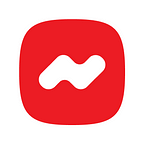Importance of Negative and First-Time Scenarios in UX Design
One common mistake for designers would be to just consider producing designs that depict the ideal state of a user interface. It is easy to design when everything is packed with well-formatted content. However, problems can develop if a design is created without considering the numerous varied scenarios that each user may confront. So, we as designers must pay attention to these scenarios!
User story mapping is a facilitated, curated conversation that brings everyone along for the journey. — Nick Muldoon, Co-CEO Easy Agile
Scenario in UX
User scenario is a technique used by designers to comprehend the product from user’s perspective.
- A user scenario’s key advantage is that it always keeps the users at the forefront of the design process.
- A user scenario should be created before proceeding with the general or actual design of a product.
- Many process facts are revisited throughout scenario development. Scenario design is similar to telling someone a tale and then going over the key details again.
- Scenarios are the most effective strategy for preparing for probable future events to produce a better product.
The Benefits of User Scenario
- A user scenario’s key advantage is that it always keeps the users at the forefront of the design process.
- A designer could provide a more accurate estimate of the project scale and difficulty as well as the time required to perform various activities since the user scenario clearly describes what a typical user wants to achieve and what kind of expectations he or she has from the product.
- User scenarios will assist us in obtaining the precise journey or mind map of the product, which will enhance the designer’s workflow.
- Identifying a product’s negative and positive states can be aided through user scenarios.
- Additionally, user scenarios can assist designers in cracking the application’s user flow by placing the user first.
How to Define User Scenario?
- Prior to defining user scenarios, we must realize that regardless of who we are, we must adopt a user-centric perspective.
- Provide both positive and negative scenarios for each module.
- This procedure doesn’t have to be complex, but it does call for thoughtful consideration of various outcomes and scenarios.
What is a Negative and First-time Scenario?
It is easy to design when everything is flawless and appealing, but clients struggle with this since they encounter entirely different states. As designers, we must focus on the other states, including the missing data state, the error state, and the blank state.
a) First-time Scenario
Blank State
The “blank state” should essentially be the screen’s appearance when there is no content, when a new user registers, or when a user views it for the first time. It is the scenario that occurs with a new product or a service when there is nothing to show.
- Let’s take Instagram as an example. As you are all aware, Instagram is arguably the most well-known and appreciated social media platform that allows us to engage digitally with our friends.
- How does Instagram seem when a new user logs in for the first time? You can see that the page is not empty, and has some activity to keep users engaged. Instagram’s main line of business is to link us up with our real-world friends. As a result, when we sign up as a new members, they offer us alternatives such as connecting through Facebook or connecting with public figures.
Empty state
An empty state should define how the screen looks when there is no content to display, such as
- How the screen communicates with the user?
- How the user performs an action that clears away the content?
b) Negative Scenario
When it comes to error, there are two displays 404 error and internet connection lost. The most frequent screen we see today is the 404 error, this state describes what the screen looks like when the user encounters a system error. There could also be an error caused by the user or caused by the system, such as a loss of an internet connection, so there are some considerations we need to make.
- What happens if there is a connectivity error
- What happens if the user causes the error
- Is the error clearly defined and easily understood by the user?
Why is it Important to Design Negative and First-time Scenarios?
- Well-designed screens can help us increase customer satisfaction, and encourage product engagement.
- When designing a UX, these negative states and first-time scenarios are often disregarded, but if done properly, they will contribute to an engaging UX, and as a result, customers are less likely to switch to competing products.
Takeaway
It’s easy to overlook the states in a UX design because they occur frequently and aren’t always known well understood, however, the benefits of these inclusions are understated because they enhance user experience and help create a more cohesive product.
